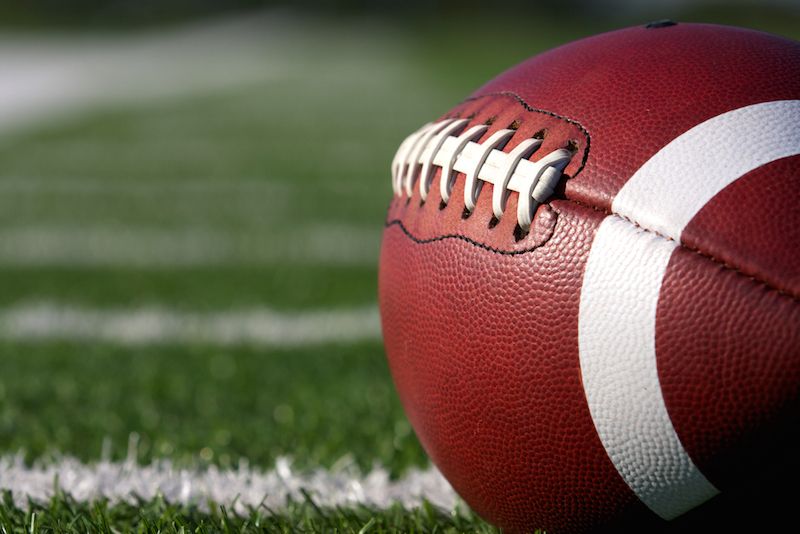Football Physics: Why Deflated Balls Are Easier to Catch

After an inspection revealed that some of the footballs used during Sunday's NFL playoff game were slightly deflated, many people are asking whether the balls gave the New England Patriots an unfair advantage over the Indianapolis Colts.
Last Sunday (Jan. 18), the Patriots landed a spot at the Super Bowl after beating the Colts 45 to 7. But an NFL inspection at halftime found that 11 of the 12 footballs the Patriots brought to be used in the game were underinflated, according to ESPN.
Just how advantageous is it to play with a deflated football? A ball that is less inflated is easier to deform and grip, said Miguel Morales, an associate professor of physics at the University of Washington. [The Mysterious Physics of 7 Everyday Things]
"Ideally, the way people are taught to catch it is to put their hands around the nose of the ball," Morales told Live Science. "That way, you've made a little cone with your hands, the ball goes in, and in that case, the pressure [within the ball] really doesn't make any difference."
But difficult plays can make it hard for players to catch the ball that way during games, he said. Oftentimes, players will end up squeezing the football with their hand and trapping it against their chests.
"If you can deform the ball, if you can pinch the ball, then it's easier to stop," Morales said.
The NFL requires that all game footballs be inflated to a pressure between 12.5 and 13.5 pounds per square inch (psi), and that they weigh 14 to 15 ounces (397 to 425 grams), ESPN reported. The footballs in the playoff game were underinflated by 2 psi. The balls were reinflated and used during the second half, and the balls' pressures were measured again after the game, but those test results have not yet been released, ESPN reported.
Sign up for the Live Science daily newsletter now
Get the world’s most fascinating discoveries delivered straight to your inbox.
The playoff game happened during rainy weather, putting another twist in #DeflateGate, a hashtag trending on Twitter.
"When the ball is slick, the [player's] squeezing action becomes more important," Morales said. "Again, having a little lower pressure helps."
A slightly deflated football may also be easier to throw, as long as it isn't overly flat. "As you grip it, you might be able to hold it a little tighter or a little harder [before throwing it]," Morales said. The amount of deflation "is not a huge difference, but I'm sure it's noticeable," he added.
A quick calculation shows that the difference in mass between a fully inflated ball and a slightly deflated one is fairly small, Michael Eads, an assistant professor of physics at Northern Illinois University, said in a statement emailed to Live Science.
A deflated football has a smaller mass because it has fewer gas molecules inside of it. Assuming that the temperature is 32 degrees Fahrenheit (0 degrees Celsius), the mass of the air in a football inflated to 12.5 psi is about 0.39 ounces (11 g). A football deflated to only 10 psi has a mass of 0.36 ounces (10.2 g). The difference is about the weight of a paper clip, Eads said.
Similarly, a difference of 2 psi in a football isn't that large, he said.
The rest of the football's mass comes from its materials, such as the leather and rubber, which add up to about 14 ounces, Eads said.
It's also possible that the pressure of a football filled in a warm room will drop once it's taken into the cold outdoors.
"Colder gas molecules move more slowly [and], hence, don't hit the walls as hard, and so the pressure is less," Eads said.
The Patriots have denied any wrongdoing, and at a news conference on Thursday (Jan. 22), quarterback Tom Brady said he didn't alter the ball in any way, according to The Washington Post.
"I don't know what happened over the course of the process with the footballs," Brady said. "I was preparing for my own job."
Follow Laura Geggel on Twitter @LauraGeggel. Follow Live Science @livescience, Facebook & Google+. Original article on Live Science.

Laura is the archaeology and Life's Little Mysteries editor at Live Science. She also reports on general science, including paleontology. Her work has appeared in The New York Times, Scholastic, Popular Science and Spectrum, a site on autism research. She has won multiple awards from the Society of Professional Journalists and the Washington Newspaper Publishers Association for her reporting at a weekly newspaper near Seattle. Laura holds a bachelor's degree in English literature and psychology from Washington University in St. Louis and a master's degree in science writing from NYU.










